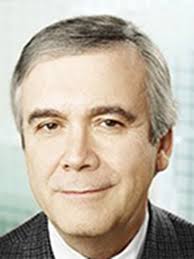With technology evolving at a rapid pace, leadership in IT becomes less a matter of telling people what to do as turning data into intelligent action. According to Gary Davenport of the CIO Association of Canada, smart leaders cut through the noise.
 “Leaders today have the standard business challenges plus digital layered on top of that, which makes for an exceptionally high level of complexity. Today’s effective leader has learned not to sweat every little thing. They prioritize and keep their composure.”
“Leaders today have the standard business challenges plus digital layered on top of that, which makes for an exceptionally high level of complexity. Today’s effective leader has learned not to sweat every little thing. They prioritize and keep their composure.”
In a recent talk with ITWC, the former retail and telecom industries CIO and current consultant to Board of Directors on digital transformation talked about digital-era leadership, and how his values have been his guiding light through the years.
“I’m all about all values-based leadership, and [that there is] a higher purpose to why we’re all here and what we’re going about,” he said. “As leaders, our values help us be the best we can be as individuals, as team members, and in leading others. I see the latter especially as a great privilege, a responsibility and a means of accountability.”
Davenport allowed that today’s rapid pace of change may serve to magnify certain challenges leaders are facing, but that “the basics” of treating people with respect, of strategy and vision, of operating always according to one’s core values, remains.
“Some things have changed, some have stayed the same,” he said. “However, the fundamentals of what leaders need to focus on – and what I would advise aspiring leaders to focus on as they pursue leadership positions – remains roughly the same.”
Leadership Learning
Davenport, who currently serves on the Board of Directors for the Information and Communications Technology Council of Canada (ICTC), is strong when it comes to the power of mentorship, and he has not only mentored but been mentored. And he has absorbed the leadership teachings of many through the years.
“I have had the pleasure of working with some incredible leaders in my career, and I have learned from them not only what to do in certain key situations but, perhaps more importantly, what not to do,” he said. “I’ve studied the work of Jim Collins [and Jerry Porras’] Built to Last and Good to Great, and used it extensively in my career.
“I have also studied Jack Welch of GE fame. While his approach is very different from my own, he had such a great record of success that I wanted to know what he was doing and how I could possibly leverage what he’s doing in my career.”
Mentors and Mentees
Most often talked about the mentor-mentee relationship is what the latter receives from the former. But Davenport, who over the years has mentored many, said mentors receive arguably as much or more than they give.
“Mentors can learn a lot from mentees. As much as I was giving them, they were giving me. There is a great value in being able to see things from your mentees’ perspective about technology and how it is evolving. It can only make you a better leader.”
Key Attributes
Further to the idea of becoming a better leader, Davenport came up with 10 key leadership attributes – some of which have particular meaning in the digital age and others that have always been true and relevant:
- Business-focused – They understand the fundamentals of business and what must be accomplished in order to achieve success
- Values-based – They can be relied on; they have undeniable integrity
- Digital Technologist – They understand technology, particularly what’s coming and how to best leverage it
- Strategist – They can think long-term and know how to get where they want to be
- Team Builder – They know how to pull together a strong team with interlocking, complementary skills
- Relationship Builder – They see other C-suite members as key partners, and put energy into building strong relationships and partnerships with them
- Communicator – They know how to get messages out and market them properly
- Innovator – They look at things with fresh eyes, and are willing (if needs be) to blow up the status quo and start again
- Action-Oriented – They work to achieve real, measurable results
- Resilient – They see opportunities even in failures; when knocked down. Said Davenport: “I’ve had projects go off the rails that forced to step back and take stock before moving on. Every leader faces this scenario, but what’s important is how you come out of it, what next steps you take. A great leader is someone who, in the face of failure, learns lessons so the same mistake is not repeated.”
Davenport allowed that no leader is perfect. “Nobody’s going to be a perfect 10 out of 10 on all these attributes. But the closer you are on each, the closer you will be to achieving success over the long haul.”
Reflecting in Words
Davenport has also published a “Leadership Blog” series aimed at CIOs and other digital leaders for the CIO Association of Canada. It is a well written summary of his experience and learning over his career. Davenport, with classic modesty describes in these terms:
“This was me stepping back and reflecting on what I have learned over the course of my career. I would recommend this to other leaders – that they sit down and reflect on what they have learned, how they have developed, and how they can help others develop.”
